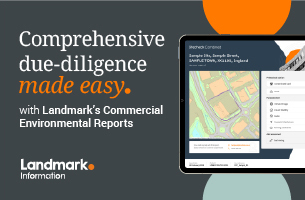Posted by Karen Edwards, head of professional development at Legal Futures Associate ILFM

Edwards: Tech is key to maintaining compliance
Does keeping up with best practice for your law firm in compliance, finance and risk management keep you awake at night? Are you concerned that perhaps your firm isn’t using the most up to date technology to help and assist your teams?
If so, you are not alone.
This, along with the focus on growth, means firms are under increasing pressure to maintain rigorous financial management and compliance practices while delivering high-quality and cost-effective services to clients.
One key aspect of this is compliance with the Solicitors Regulation Authority (SRA) accounts rules. While compliance has traditionally been a time-consuming and complex process, modern technology offers some powerful solutions to streamline and enhance these efforts.
This article considers some of the ways technology can help, and some risks to be aware of.
Understanding the challenge
The accounts rules set out clear guidelines for how law firms should manage client money. This includes keeping accurate records, maintaining separate client and business accounts, and conducting regular reconciliations.
For many firms, especially smaller practices or those with limited resources, meeting these requirements can be daunting and time-consuming.
How technology can help
Technological advancements have paved the way for more efficient and accurate compliance and finance processes. These include:
Automated bookkeeping: Specialised legal accounting/practice management software can automate many aspects of financial record-keeping. This reduces the risk of human error and ensures that transactions are recorded consistently and accurately.
Real-time monitoring: Advanced systems can provide real-time visibility into financial transactions, allowing firms to spot and address potential issues promptly.
Integrated case management: By integrating financial management with case management systems, firms can easily link financial transactions to specific matters, improving transparency and traceability.
Automated reconciliations: Regular bank reconciliations are a crucial part of compliance. Technology can automate this process, flagging discrepancies for review and saving significant time.
Reporting and analytics: Modern software can generate comprehensive reports required for compliance, such as client account statements and three-way reconciliations, at the click of a button.
Audit trails: Digital systems create detailed audit trails, making it easier to demonstrate compliance during SRA audits or internal reviews.
Secure data storage: Cloud-based solutions offer secure, off-site storage of financial records, protecting against data loss and ensuring business continuity.
Additional benefits
SRA compliance is, of course, the priority but the adoption of technology for financial management also offers additional benefits such as:
Improved efficiency: By automating routine tasks, it frees up employee time, allowing them to focus on other areas of priority.
Enhanced accuracy: Reducing manual data entry helps minimise the risk of mistakes.
Better client service: Quicker access to financial information allows firms to respond promptly to client queries.
Informed decision making: Advanced reporting tools provide insights that can inform strategic business decisions.
What to consider when choosing technology
When selecting technology for your firm you should consider the following:
Compatibility: Ensure the solution integrates well with your existing systems.
Scalability: Choose a system that can grow with your firm.
User-friendliness: Look for intuitive and up-to-date systems that require minimal training for staff.
Support: Opt for providers offering robust customer support and regular updates.
Data protection and security: Choose solutions with strong data protection and security measures.
Key risks and concerns
The introduction of new technology inevitably brings some risks and challenges that must be considered. Some of the main concerns to navigate are:
Data accuracy: Incorrect entries leading to non-compliance.
Cybersecurity: Unauthorised access risking data theft or manipulation.
Over-automation: Neglecting necessary manual checks.
Integration Issues: Inconsistencies between different systems.
Data loss: Inadequate backup and recovery procedures
Outdated systems: Failure to update with changing regulations.
User error: Misuse due to insufficient training
Audit trail gaps: Difficulty tracing actions or changes
Account segregation failures: Improper separation of client and business money.
Reconciliation oversights: Automated processes missing discrepancies
In order to mitigate these risks, you should consider regular system reviews, strong cybersecurity, balanced manual checks, staff training, keeping software updated, and having contingency plans in place.
Technology can provide immense benefits to compliance and finance professionals, helping them not only meet regulatory requirements more easily, but also enhancing their overall financial management practices. As the legal sector continues to evolve, embracing these technological solutions will be key to maintaining compliance, improving efficiency, and staying competitive in a challenging market.
However, while technology can greatly assist in compliance efforts, it’s not a substitute for sound financial practices and professional judgement. Firms should use these tools to support, rather than replace, their existing compliance strategies.











Leave a Comment